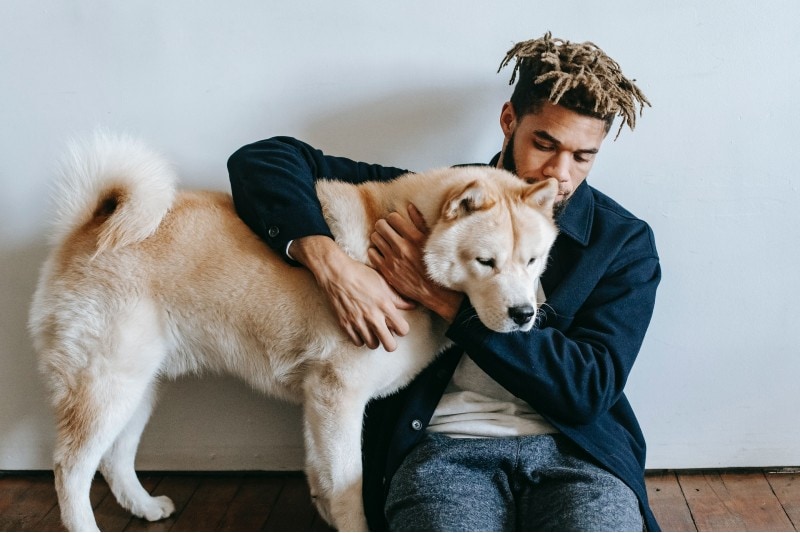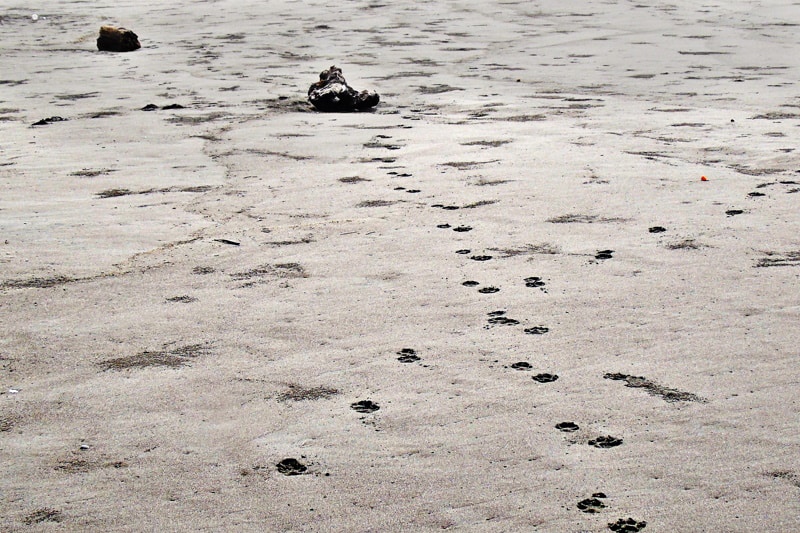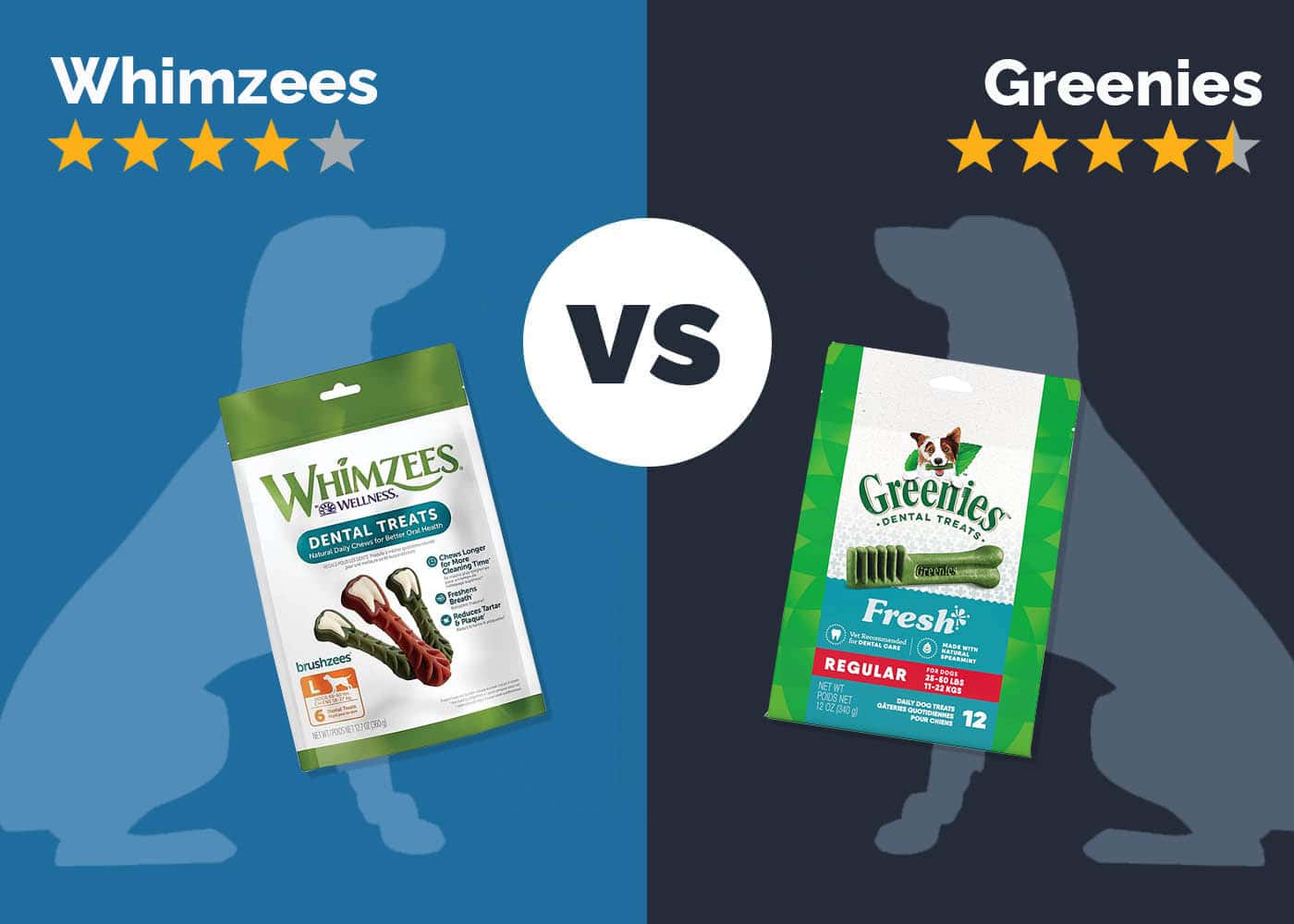Irish Wolfhound vs Great Dane: The Differences (With Pictures)
By Jessica Kim
Updated on
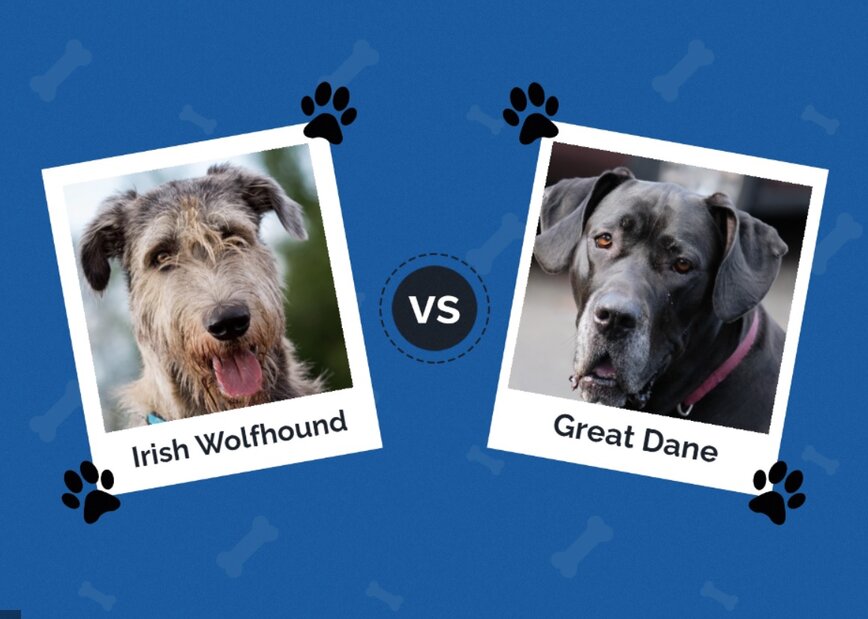
Click to Skip Ahead
Both the Irish Wolfhound and Great Dane are giant dog breeds with formidable and noble origins. They were bred as working dogs that hunted large game, and they were also often employed as guard dogs and war dogs.
In contrast to their intimidating size, both dogs have relatively mild temperaments and often make wonderful family dogs that are great with children. While both dogs are pretty easy to train, you do have to consider making considerable lifestyle changes to accommodate their large size. So, they’re often not the best dogs for inexperienced dog owners.
Before bringing home a new dog, it’s important to do your research to determine which breeds would best suit your lifestyle. Here’s a glimpse of what living with an Irish Wolfhound and Great Dane would look like.
Visual Differences
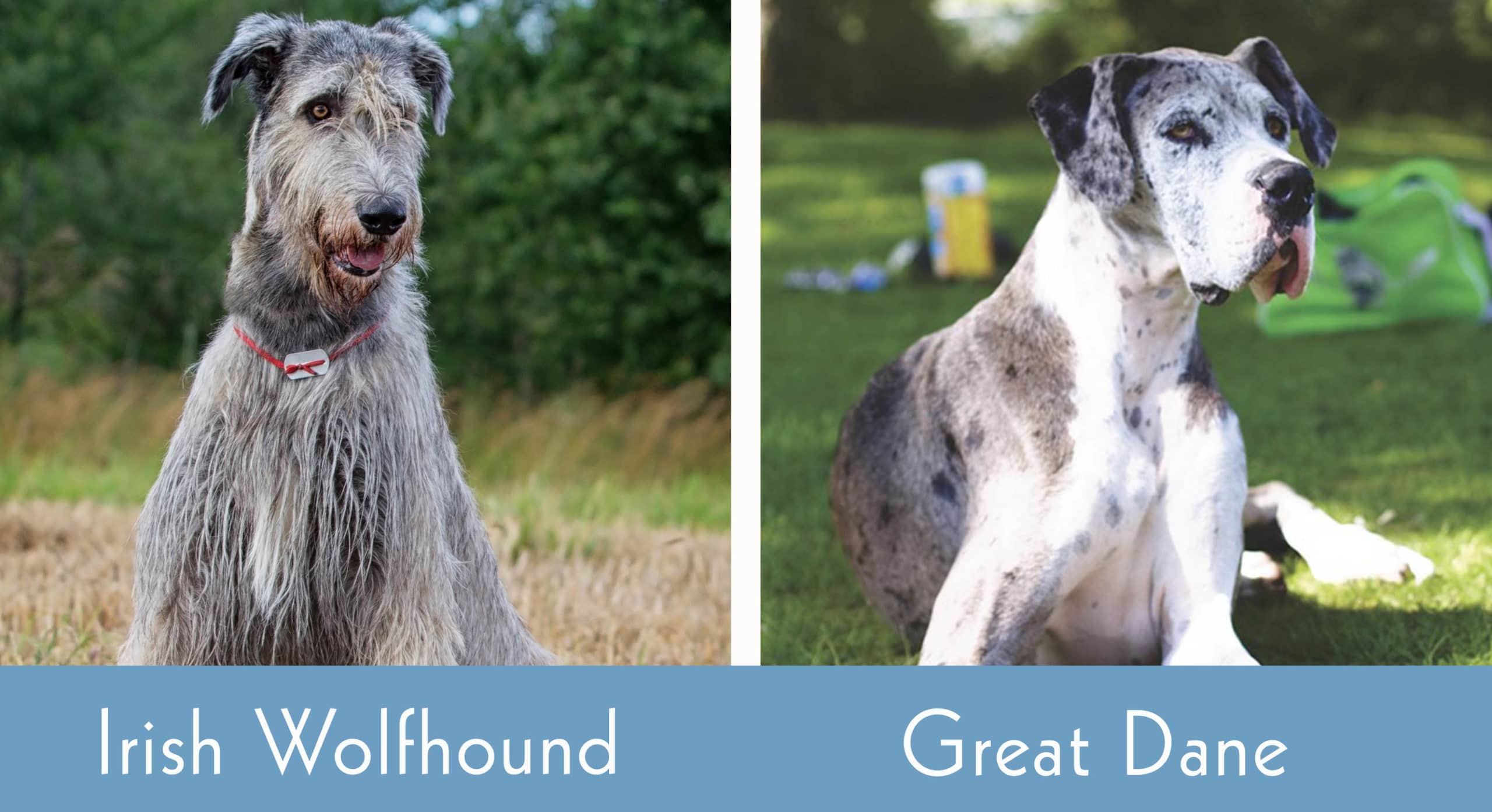
At a Glance
- Average height (adult): 32 – 35 inches
- Average weight (adult): 115 – 180 pounds
- Lifespan: 6 – 8 years
- Exercise: 40+ minutes a day
- Grooming needs: Moderate
- Family-friendly: Yes
- Other pet-friendly: Often
- Trainability: Intelligent and loyal
- Average height (adult): 26 – 34 inches
- Average weight (adult): 100 – 200 pounds
- Lifespan: 7 – 10 years
- Exercise: 45+ minutes a day
- Grooming needs: Minimal
- Family-friendly: Yes
- Other pet-friendly: Yes
- Trainability: Intelligent and eager to please
Irish Wolfhound Overview
Personality / Character
Irish Wolfhounds are sighthounds that were originally used for hunting large game, like deer and wild boars. They also protected their family from wolves and were able to chase and hunt them down. Today, the Irish Wolfhound is more of a companion dog that prefers to spend its days with its favorite people. Despite their large size and thick coats, these dogs aren’t outdoor dogs and should live inside the home.
Irish Wolfhounds are extremely loyal to their families and don’t do well being home alone for long hours. They can get along with cats and other dogs with early socialization, but they often prefer being the only pet in the home. They also can’t usually be trusted around small animals due to their strong prey drive.
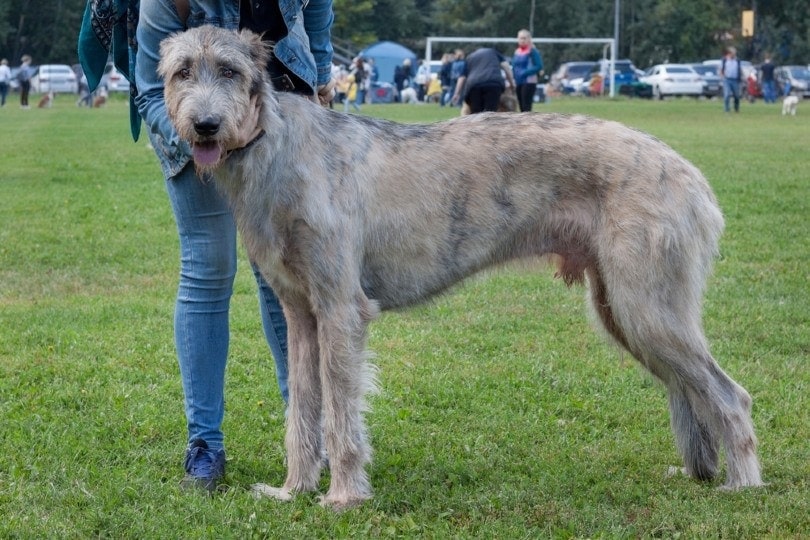
Training
Irish Wolfhounds are fairly easy to train with obedience commands. They’re very sensitive to your tone of voice, so they do best when given a lot of patience and encouragement. Harsh tones are especially detrimental to an Irish Wolfhound’s confidence. So, if you find yourself getting particularly frustrated, it’s best to walk away and resume training later.
It’s relatively easy to crate-train and potty-train Irish Wolfhounds, but it can be challenging for them to walk on leashes without pulling or lunging. They have a strong prey drive and can start to chase small animals. So, having young children walking an Irish Wolfhound may not be the best idea.
Exercise
Irish Wolfhounds aren’t particularly high-energy dogs, and about 45 minutes of exercise a day is sufficient for adult dogs. While these dogs are content going on leisurely walks, they love to run and chase. So, they often do best in single-family homes with fenced yards. While Irish Wolfhounds are loyal dogs, they may roam if they find a small animal to chase. So, make sure that you have a tall fence that can keep these large dogs inside.
As with most giant dog breeds, Irish Wolfhounds are prone to joint issues as they age. So, it’s important to provide adequate exercise without overdoing it and causing stress on their joints.
Health & Care
Irish Wolfhounds tend to live healthy lives, but they have short lifespans. The most common health issues that you’ll encounter are bone and joint problems, like hip dysplasia and osteochondritis dissecans. As with most other sighthounds, Irish Wolfhounds are also sensitive to anesthesia, so make sure to find a veterinarian that has experience working with sighthounds.
Irish Wolfhounds have moderate grooming needs. They have a thick double coat and shed throughout the year. Fortunately, Irish Wolfhounds aren’t heavy seasonal shedders, so the shedding is pretty manageable as long as you brush your dog’s coat at least once a week. It’s important to use pin brushes and combs to prevent mats and tangles.
They also don’t require that many baths and can get by with getting bathed only when they start to smell. Just make sure to keep their ear canals dry. Their long, fluffy ears can trap moisture and are susceptible to ear infections, so using an ear cleanse regularly can keep their ears clean and dry.
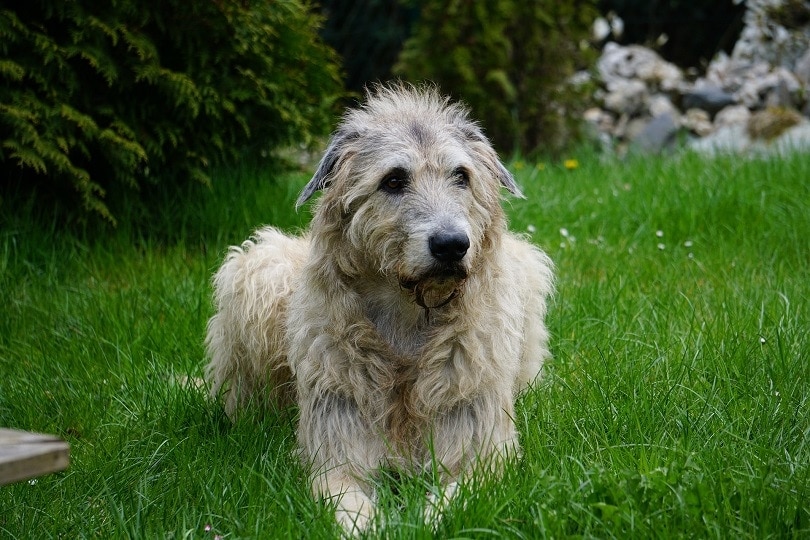
Suitable for
Irish Wolfhound owners should be prepared to make some significant lifestyle changes to accommodate living with a giant dog breed. They may need to be extra mindful of storing food properly, as Irish Wolfhounds can easily pick food off a table and nudge cabinets open if they stand on their hind legs. They also have large appetites and feeding them can get pretty expensive.
Irish Wolfhounds are wonderful family dogs and can live happily in single-family homes or houses with a lot of space for them to run around. They’re often best for families with older children because they can easily knock over small children.
Great Dane Overview
Personality / Character
Like Irish Wolfhounds, Great Danes are wonderful family dogs. These dogs are pretty easygoing and are better trusted with young children because they’re less likely to have sudden bursts of energy or strong prey drives. Even though they have a fierce hunting background, these traits were eventually bred out so that the Great Danes of today are more mild-mannered than their ancestors.
Great Danes can live as apartment dogs as long as their exercise needs are met. However, they’ll be happiest in single-family homes or in rural areas where they have plenty of space to walk around. These dogs love the peaceful life and don’t mind spending most of their days lounging on the couch.
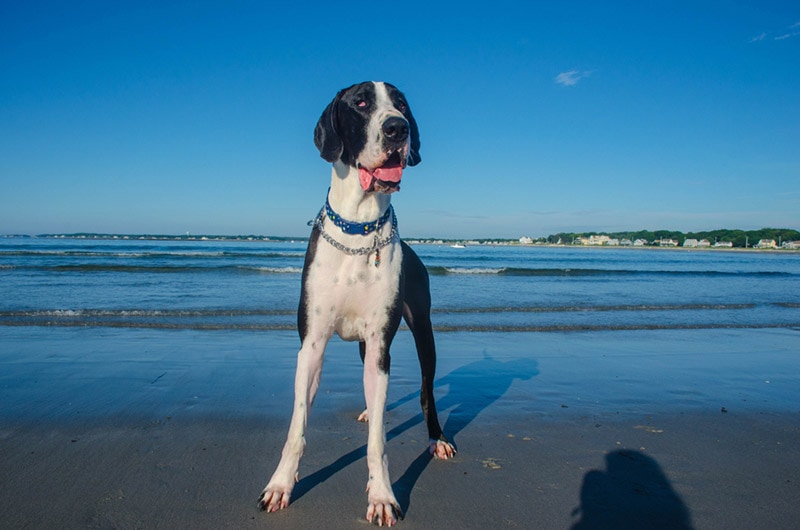
Training
Great Danes are a little easier to train than Irish Wolfhounds because they’re more eager to please. They love their families and are very attentive. They can also live with other pets harmoniously if they’re properly socialized.
These dogs are typically patient with children, especially as adults. So, it’s very likely that you’ll focus more on teaching children to interact with Great Danes appropriately. It’s important never to place children on their backs like horses. Both Great Danes and Irish Wolfhounds aren’t load-bearing dogs and can experience joint damage if they carry weight on their backs.
Great Danes aren’t known to bark, but they do have a large, piercing bark. So, you may need to train your Great Dane to stop barking on command if you sense that excessive barking is becoming an issue.
Exercise
Great Danes don’t need too much exercise a day. Puppies will probably do well with at least an hour of daily exercise, while older dogs will need about 45 minutes of exercise. Great Danes are perfectly content with going on brisk walks around the neighborhood rather than chasing a ball or running around a yard.
Like Irish Wolfhounds, Great Danes are prone to developing hip and joint issues. So, they shouldn’t participate in strenuous exercise.
Health & Care
Great Danes have shorter life spans than smaller dog breeds, but they tend to live a little longer than Irish Wolfhounds. They’re relatively healthy but can develop joint issues as they age.
Great Dane owners should also be mindful of gastric torsion or bloat. Bloat can occur if a dog drinks a lot of water or exercises right after eating. Bloat is a serious condition that can lead to fatal consequences, so Great Dane owners should familiarize themselves with signs of bloat so that they can provide immediate attention if it occurs.
Great Danes are moderate shedders and require regular brushing. A bristle brush can help pick up dead hairs and debris from your Great Dane’s coat. Great Danes can have cropped and uncropped ears. Dogs with uncropped ears are more prone to ear infections, so it’s important to clean their ears regularly.
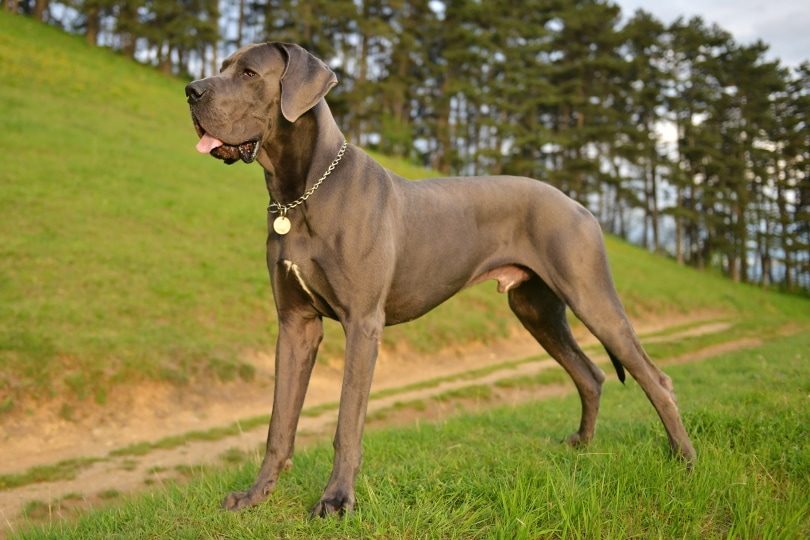
Suitable for
Great Danes are great for families and tend to be gentler with young children. Just like Irish Wolfhounds, their sheer size makes them more suitable for experienced dog owners.
Some Great Danes can live happily in apartments, but apartment dwellers need to be extra mindful of providing plenty of exercise opportunities for Great Danes.
Which Breed Is Right for You?
Irish Wolfhounds have more bursts of energy and are often better for homes with older children. They also don’t like being alone for too long and prefer human companionship over spending time with other animals.
Great Danes are a little more easygoing than Irish Wolfhounds and tend to be better with younger children. They also have an easier time living with other dogs and animals.
Overall, both Irish Wolfhounds and Great Danes are better for experienced dog owners that are familiar with dog behavior and meeting a dog’s needs. If you’re interested in caring for a giant dog breed, you’ll have to prepare a bigger budget for food, medications, and grooming tools. Other items, like beds and jackets, tend to be much more expensive for large dog breeds. It’s also essential to dog-proof your home to ensure that your dog stays safe and away from any harmful foods or chemicals.
If you’re prepared for the extra responsibilities that come with giant dog breeds, both the Irish Wolfhound and Great Danes are excellent choices and can be loyal and loving companions.
Featured Image Credit: (L) DragoNika, Shutterstock | (R) Rana Lokos, Unsplash


